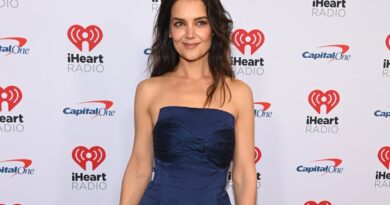Richard Williams Net worth 2022
In the 1980s and early 1990s, Disney Animation struggled to find its footing again after a series of creatively uninspired films like The Rescuers, The Fox and the Hound, and Oliver & Company.
These movies were popular among children but lacked the same magic that made classics like Cinderella, Snow White, Dumbo, and Alice in Wonderland so special.
How much does Richard Williams have Net Worth?
| Net Worth: | $25 Million |
| Real Name: | Richard Dove Williams Jr. |
| Birth Date: | February 14, 1942 |
| Place of Birth: | Shreveport, Louisiana, United States |
| Father Name: | Richard Dove Williams, Sr. |
| Mother Name: | Julia Mae Metcalf |
| Gender: | Male |
| Marital Status: | Married |
| Wife Name: | Lakeisha Graham (m. 2010–2017), Oracene Price (m. 1980–2002), Betty Johnson (m. 1965–1973) |
| Children Name: | Venus Williams, Serena Williams, Sabrina, Richard III, Ronner, Reneeka, Katrina, Dylan |
| Height: | 1.85m |
| Weight: | 87kg |
| Profession: | Tennis coach |
| Nationality: | United States of America |
Fortunately for us, this brief dark period also sparked an internal revolution that would change everything about Disney Animation as we knew it. With the release of Aladdin in 1994, things finally started looking up again with a string of hits over the next few years such as Pocahontas and Mulan.
Richard Williams’s Net worth Last 5year
Net Worth In 2022 $10 million
Net Worth In 2021 $9 million
Net Worth In 2020 $8.5 million
Net Worth In 2019 $8 million
Net Worth In 2018 $7 million
And while much has been said about these films being this “new’ renaissance” for Disney animation, very few people know who exactly was responsible for bringing it all about.
To learn more about this fascinating period in Disney history – as well as how Richard is personally responsible for some of your favorite childhood movies — read on for our exclusive interview with the man behind the Disney Renaissance…
A Brief History of Disney Animation in the 80s and 90s
Before we look at the Disney Renaissance, let’s have a brief overview of what happened to the studio in the 80s and 90s. In comparison, Disney was always a big name in animation, the “golden age” (so to speak) of the studio ended in the 50s when Walt Disney passed away.
There were still good films here and there – like Sleeping Beauty, One Hundred and One Dalmatians, The Sword in the Stone, and The Jungle Book — but things were generally not as popular as they used to be. This continued into the 70s and 80s, with films like The Rescuers, The Fox, and the Hound, and The Black Cauldron being released.
The Renaissance Begins: Aladdin
It was in the early 90s that Disney’s animation group was put in the hands of a man named Jeffrey Katzenberg. He had been a big shot at Disney a few years before (helping to produce The Little Mermaid), but had left to form his own production company called DreamWorks.
Walt Disney Animation Studios had been struggling for years, with only one hit (The Little Mermaid) in the 1980s and one modest hit (The Rescuers Down Under) in the 1990s. Luckily, when Jeffrey Katzenberg was put in charge of the company, he decided to make some changes.
One of the first things he did was to bring in Michael Eisner as an executive, who would eventually become the CEO of Disney. The second thing Katzenberg did was tell the animators to “squash the suck” out of the studio. In other words, he wanted to make sure that the people working at Disney were the best at what they did.
A Renaissance Continues: The Lion King, Pocahontas, and Hercules
Once Disney had the best crew they could find, they needed to make a hit film. This was no simple task, but they managed to do it with The Lion King in 1994. It was the first film that Jeffrey Katzenberg had produced at Disney since The Little Mermaid in 1989. The Lion King was a big hit, grossing over $300 million at the box office and winning two Academy Awards.
It was also the first Disney film to use computer animation (something that would become a staple throughout the Renaissance era). With The Lion King, Disney’s Renaissance period began with a big hit. The next film from Disney was Pocahontas in 1995. It was one of the first films to use hand-drawn animation (something Disney was famous for) and computer animation together.
It was a modest hit at the box office, but it was critically acclaimed and won the Academy Award for Best Musical Score. In 1996, a film called The Hunchback of Notre Dame was released. It used only hand-drawn animation, and it was the first Disney film to be based on a novel. It wasn’t a huge hit at the box office, but it was critically acclaimed and won the Academy Award for Best Original Musical Score.
Finding Its Footing Again: Mulan and Toy Story
There were two films in the late 90s that marked a change in direction for Disney. The first was the release of Mulan in 1998. It was the next big hit for Disney, and it was the first film since The Lion King that was in traditional animation. Mulan was also the first film from Disney that featured an all-Asian cast and an Asian setting.
While it didn’t win any Academy Awards, it was critically acclaimed and was nominated for an Annie Award for Best Animated Feature, which Disney had never won before. In 1999, Toy Story 2 was released. Disney did not make it, but it was a sequel to a Disney-distributed film. In fact, it was the sequel to the first computer-animated film ever made. Because Disney had distributed the original Toy Story, it was counted as a Disney film.
Final Thoughts
Disney’s Renaissance period spanned the early 90s until the end of the 90s. It was during this time that the company made a concerted effort to hire the best artists and animators, followed by a decision to make films that were very much in the Disney style. The first film of the Renaissance era was Aladdin, followed by The Lion King, Pocahontas, and Hercules. In the late 90s, we also saw Mulan and Toy Story. The Disney Renaissance may not have lasted as long as the original Renaissance, but it was just as impactful on the company.




